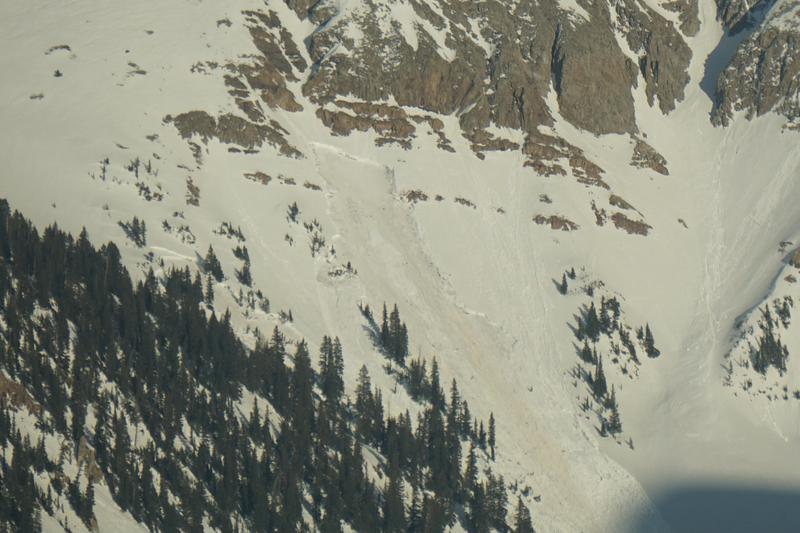The Geyser Pass Road is melted down to the dirt up to the parking lot.
The Lower Utah Nordic Alliance is through grooming for the season.
24 Hour Snow 0" 72 Hour Snow 0" Base Depth in Gold Basin 48" Wind NW 25-30 G38 Temp 23F
A cold front moving through the region has brought gusty NW winds and cooler temps to our area. Today look for sunny skies, blustery NW winds, and temps 5-10 degrees cooler than yesterday with a high at 10,000' of around 40F. Slightly warmer temps, clear skies, and breezy conditions are on tap through the weekend with an unsettled weather pattern shaping up for next week.
Overnight freezes and daytime high temps mean everything right now. Get current and past 24-hour readings from these real-time weather links.
Snowpack Discussion
Successive nights with below-freezing temps have helped to lock up the snowpack and we've moved into a decent corn cycle on SE-W aspects. South facing lines are melting out fast, however. The extreme heat last weekend lumped up the surface a bit and it's not as smooth as it was but we found decent corn skiing yesterday between about 11,700' and 10,200'. Cooler temps and winds will slow down the softening today. Look for things to come on between 11:00 and 1:00 depending on the aspect. Once the crust becomes unsupportable and the snow starts to get sloppy, it's time to call it a day as the danger for loose wet, or even wet slab avalanches will start to develop.
North aspects remain in transition and conditions are variable ranging from hard, wind-packed, and frozen boilerplate, to crusted over with occasional pockets of dry powder-like snow. Weak, sugary, faceted snow still exists near the ground, especially at higher elevations and it may still be possible to trigger an avalanche on this weak layer. Slopes with steep convexities and rocky, more radical terrain are where you are most likely to trigger an avalanche failing on this weak, faceted snow.
This large
wet slab avalanche occurred high in Gold Basin last Sunday. It failed on weak faceted snow near the ground as a result of percolating melt-water. Though extreme heat and a lack of overnight re-freezes contributed to the failure, we need to continue to be suspicious of this type of activity as the days heat up. Avoiding very steep, sun-exposed slopes around rock bands remains a good idea.












